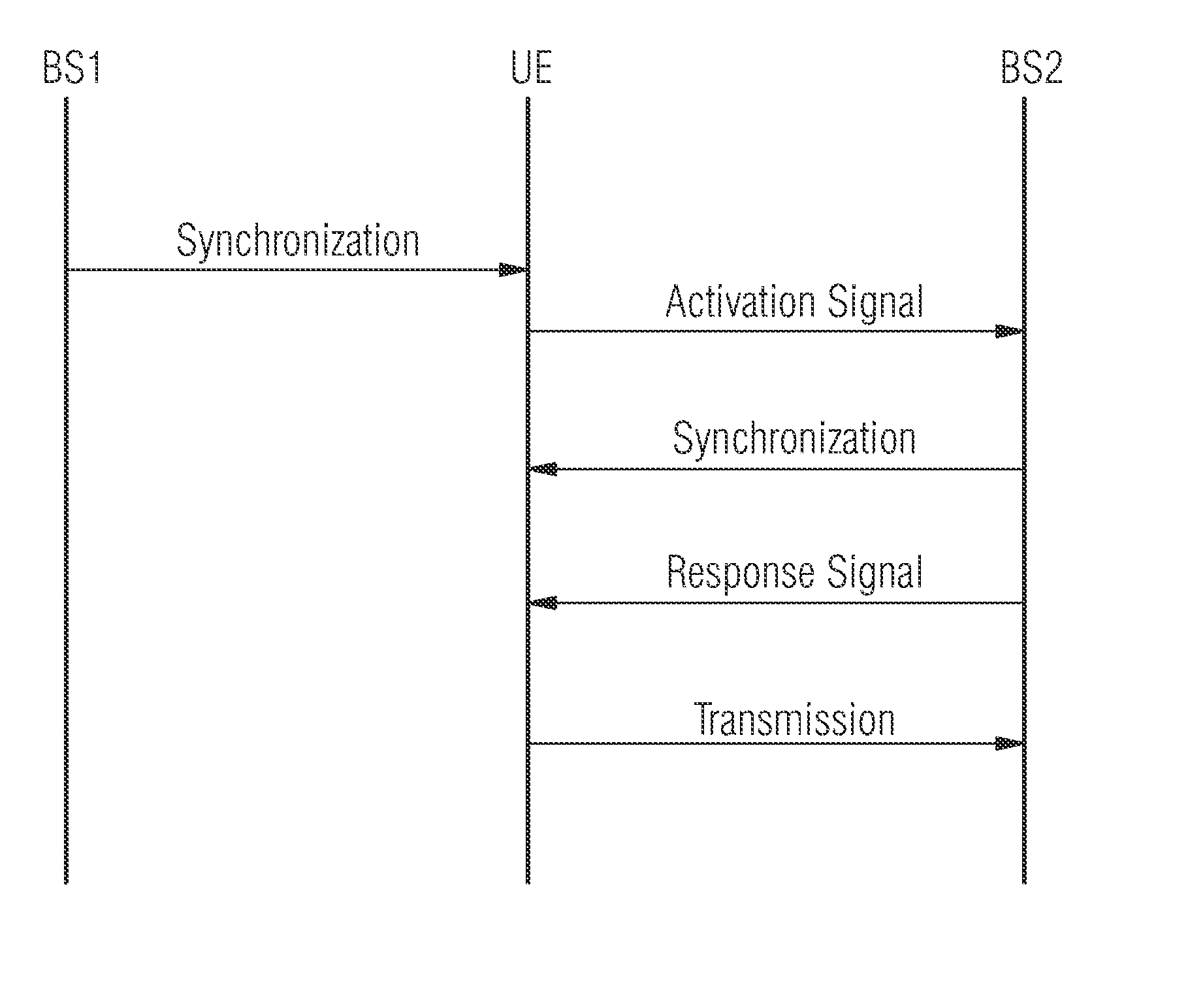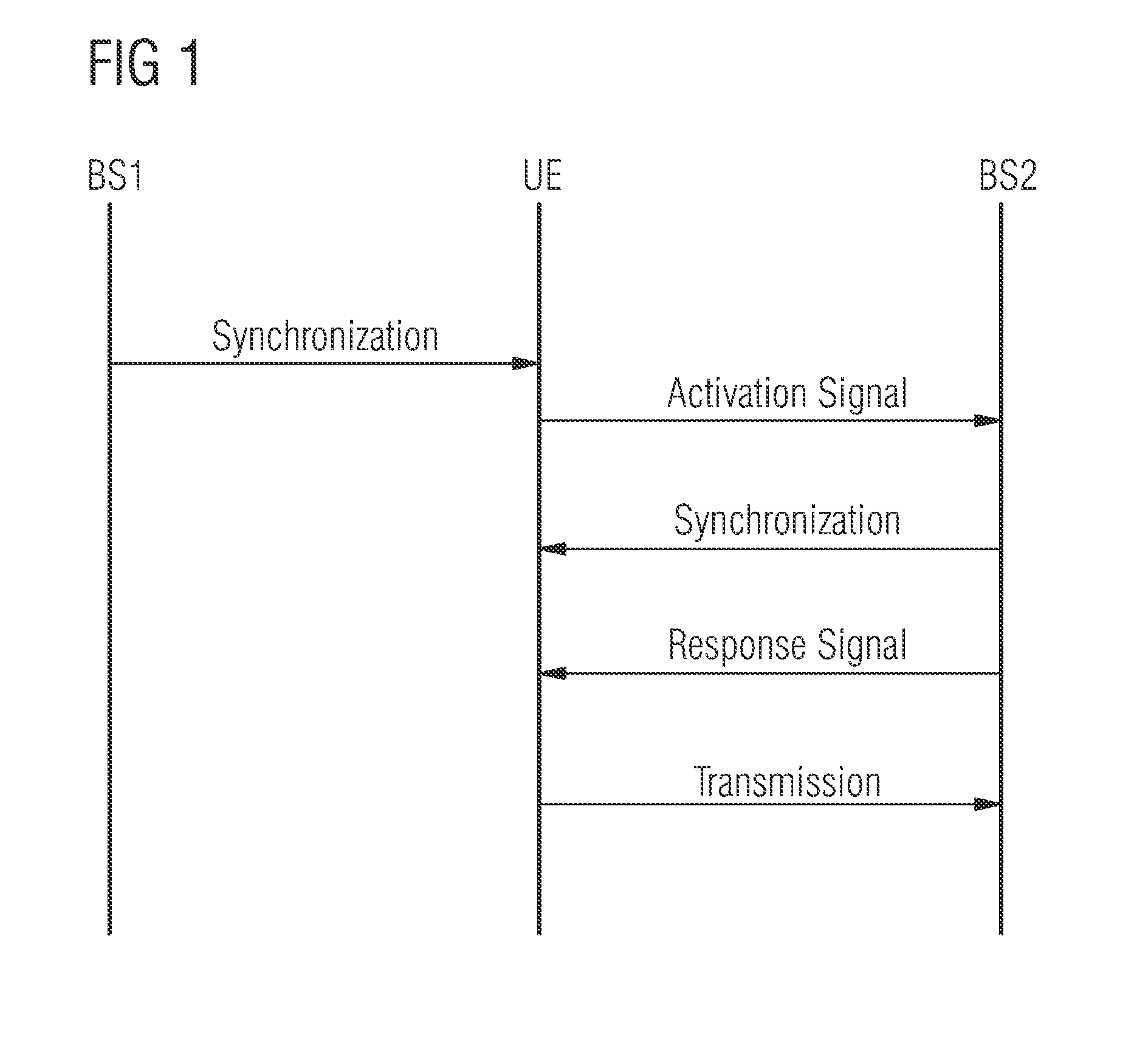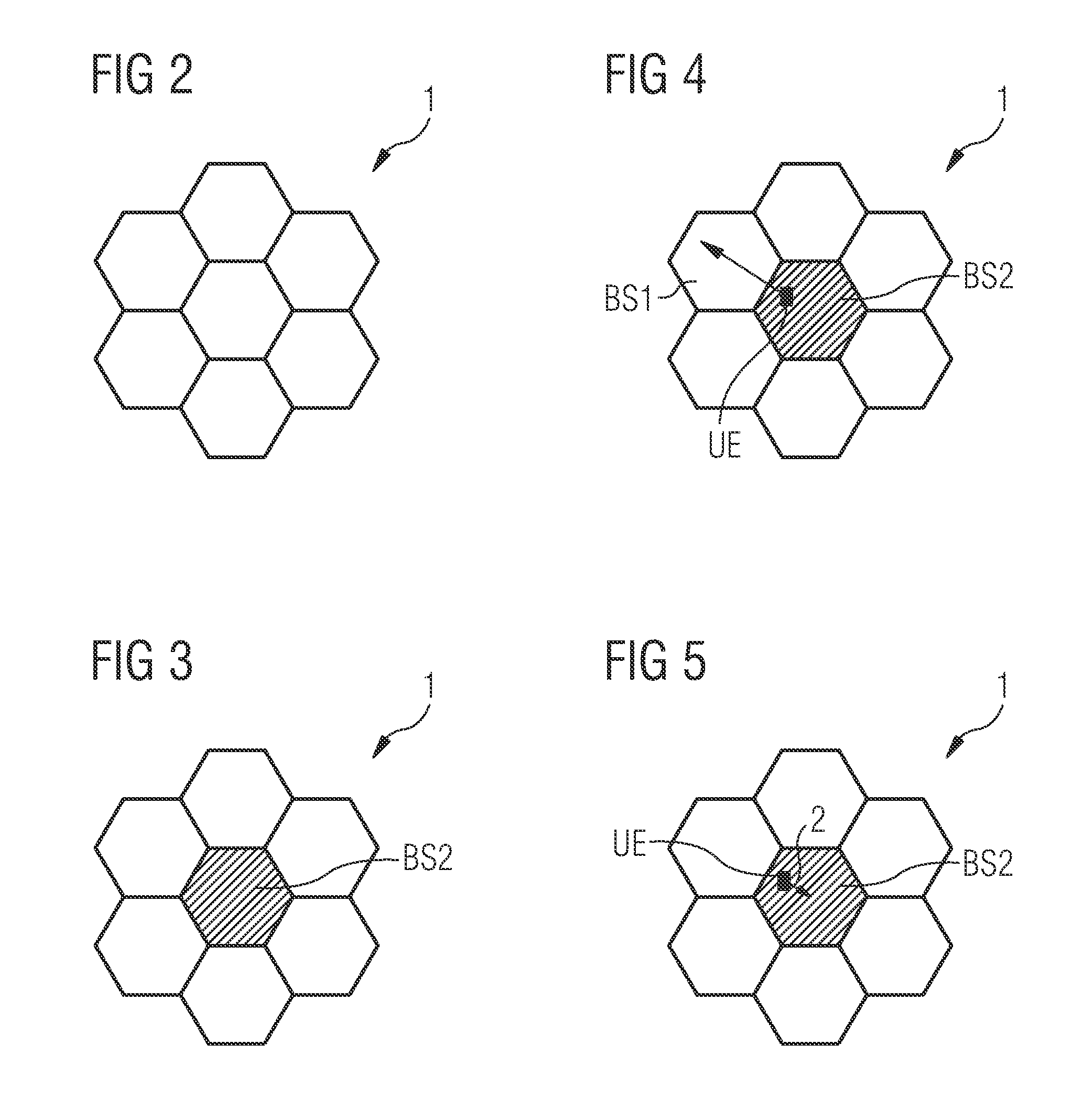Method for Transferring a Base Station of a Wireless Communication Network from a Standby Mode to a Fully Activated Mode
- Summary
- Abstract
- Description
- Claims
- Application Information
AI Technical Summary
Benefits of technology
Problems solved by technology
Method used
Image
Examples
Embodiment Construction
[0097]The illustration in the drawing is schematically. It is noted that in different figures, similar or identical elements are provided with the same reference signs.
[0098]FIG. 1 shows a transactional flow diagram. In a first step, not shown, a user equipment UE, which is assigned to a home zone or base station, detects with any kind of location detection, for example WA fingerprint or GPS data, if its current location is in its home zone or in the range of the assigned base station.
[0099]In a second step, the UE synchronizes to the strongest received base station BS1. This step is optional. With the synchronization, the UE may get further information about the assigned base station, as for example periods of activity.
[0100]In a third step, the UE transmits an activation signal, i.e. a RACH burst, to the assigned base station BS2 with a wake-up preamble assigned to the base station BS2.
[0101]Subsequently, the UE waits for activation of BS2 transmitter and specifically for the tran...
PUM
 Login to View More
Login to View More Abstract
Description
Claims
Application Information
 Login to View More
Login to View More - R&D
- Intellectual Property
- Life Sciences
- Materials
- Tech Scout
- Unparalleled Data Quality
- Higher Quality Content
- 60% Fewer Hallucinations
Browse by: Latest US Patents, China's latest patents, Technical Efficacy Thesaurus, Application Domain, Technology Topic, Popular Technical Reports.
© 2025 PatSnap. All rights reserved.Legal|Privacy policy|Modern Slavery Act Transparency Statement|Sitemap|About US| Contact US: help@patsnap.com



